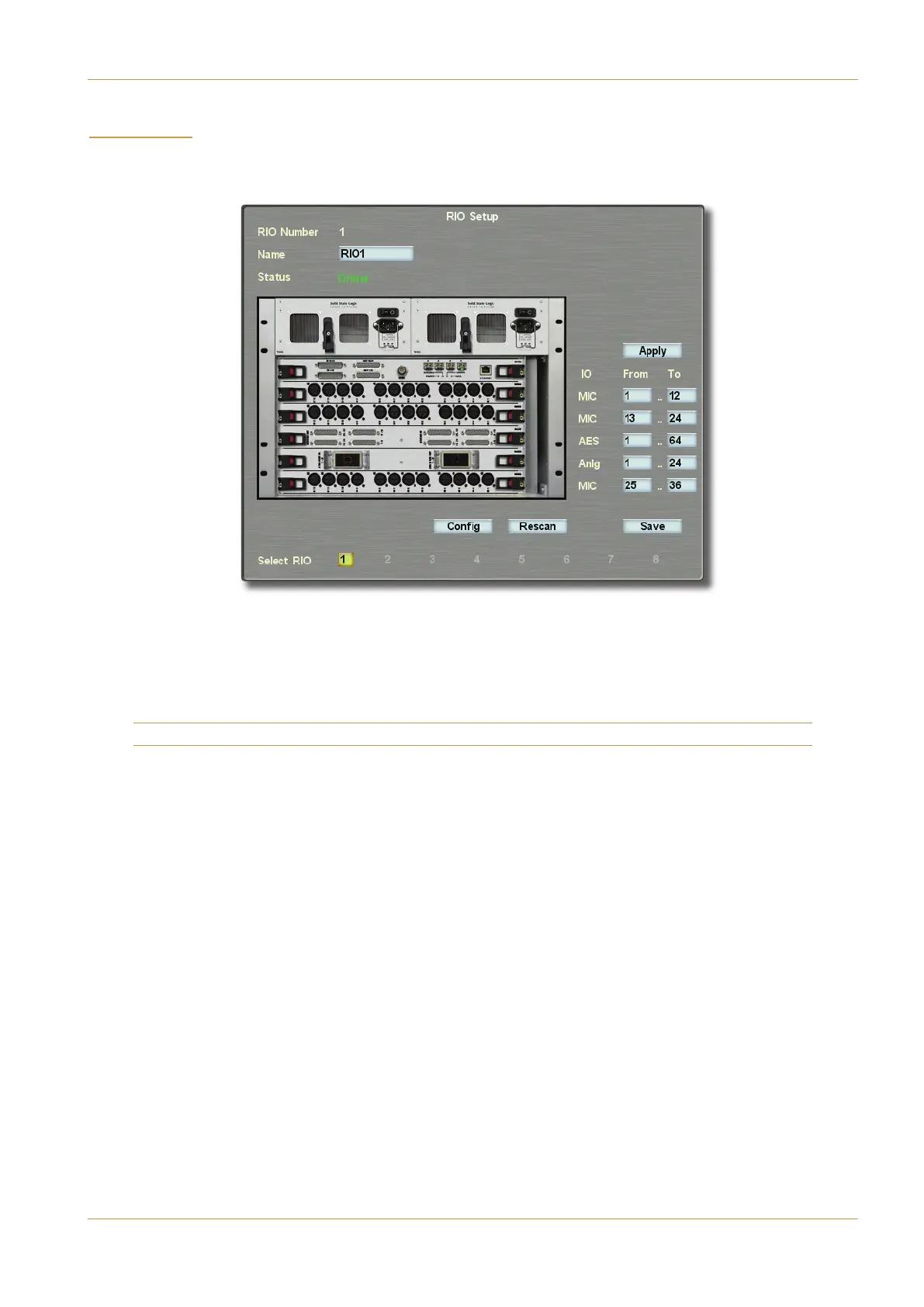C10 HD Installation Manual Section 5: System Administration | Page 5-29
'$()*%
‰ Stabbing the ?>697 button below a RIO link in the !9>;*B5 display brings up a '$(5CD@ display. This display
provides a diagrammatic layout of cards fitted to that RIO rack, and is where its IO cards are configured:
IO cards handle a different number of inputs or outputs according to their type:
>1<?7D5$31A4 24 balanced line inputs and outputs
979C1<$31A4 64 channels (32 AES/EBU pairs) of balanced inputs and outputs
"93=@31A4 12 input channels per card
Note that the top slot in the RIO is always fitted with the controller card.
‰ To rename the RIO, press the blue box next to the #1=5 legend, type in the new name in the QWERTY pop-up
which appears, and press $ .
If the card is online, $><9>5 will be displayed in green to the right of the (C1CDB legend. If the card is not online, $66<9>5
will be displayed in red.
If cards are rearranged within the RIO, pressing '5B31> will correct the '$(5CD@ display.
‰ Press (1E5 before leaving the display.
The boxes to the right of the graphic, underneath the @@<H button, are used to defined the numbering of the IO for
each card. Where there is more IO available than can be exchanged using the current link configuration, as described
below, these buttons also allocate bandwidth to each card:
Each link has bandwidth for 64 channels, though two channels on the first link to each RIO are taken up with control
information, thus reducing the bandwidth on that link to 62 channels. Each RIO can have up to four links, allowing space
for a total of 254 channels. These RIO links are configured in the $!9>;B display, described on Page 7-27. If there is
more IO enabled in the $1A4B display than the available links allow, priority will be given to the lowest-numbered IO
within the lowest-numbered card. Any IO beyond the configuration’s capacity will be greyed-out in the $#1=5Band
$A?D@B displays.
Route Menu
